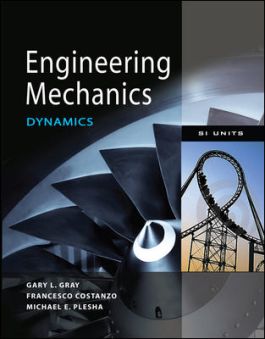Engineering Mechanics: Dynamics, Asia Adaptation
Receive via shipping:
- Colour, print bound version of the complete text
Table of Contents
Preface
1 Setting the Stage for the Study of Dynamics
2 Particle Kinematics
3 Force and Acceleration Methods for Particles
4 Energy Methods for Particles
5 Momentum Methods for Particles
6 Planar Rigid Body Kinematics.
7 Newton-Euler Equations for Planar Rigid Body Motion
8 Energy and Momentum Methods for Rigid Bodies
9 Mechanical Vibrations
Appendix
A Mass Moments of Inertia
B Angular Momentum of a Rigid Body
C Answers to Selected Problems
Overview
Engineering Mechanics: Dynamics is the result of years of teaching experience and research on how students study and learn. All aspects of this text have been developed to improve students’ abilities to understand mechanics. The authors, who are active teachers, are dedicated to the science of teaching, and their experiences have given them great insights in how to deliver a great learning tool for students.
Features
• A Consistent Approach to Problem Solving All example problems follow the same structured problem-solving methodology. This process includes Road Map, Modeling, Governing Equations, Computation, and Discussion & Verification.
• Contemporary Examples, Problems, and Applications The problem sets have been carefully constructed to help show how various subjects are used in engineering practice. Considerable effort has been made to make the example problems, homework problems, and design problems realistic in terms of how dynamics is used in engineering practice.
• A Focus on Design The authors have systematically incorporated real-life design and modeling problems throughout. Topics include meaningful discussions on design, ethics, and professional responsibility.
• Computational Tools This book features a set of problems to be solved with computational software. Utilization of these programs extends the types of problems that can be solved and gives students insight into the power of these tools.
• Modern Pedagogy Modern pedagogical elements have been included throughout the text. These elements help reinforce concepts and they also provide additional information to help students understand the concepts.
Supporting Websites
- Online Learning Center: http://www.mhhe.com/plesha/em/dynamics

